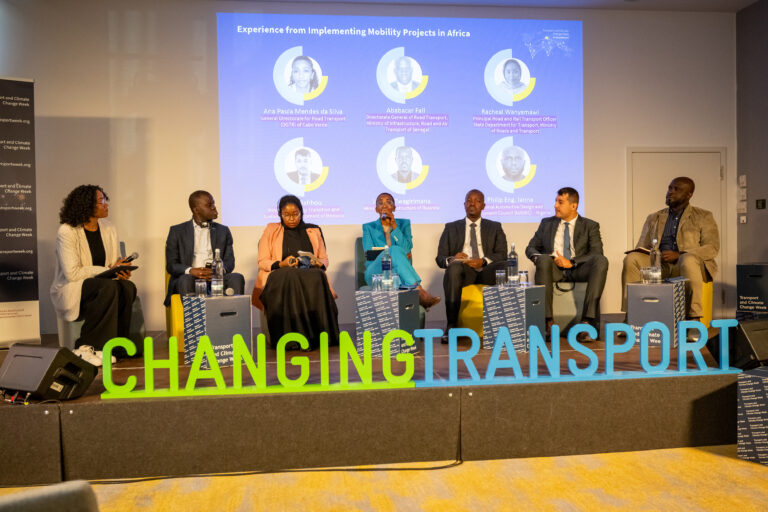Houston leader on building inclusive communities through innovation – InnovationMap

Report on Inclusive Technology and its Role in Advancing Sustainable Development Goals
Introduction: Aligning Technological Innovation with Sustainable Development Goals
Technological innovation is a critical driver of progress. However, its true value is measured not by speed or novelty, but by its contribution to inclusion and equity. This report examines how inclusive technology—designed to benefit diverse populations, including individuals with disabilities—directly supports the achievement of the United Nations Sustainable Development Goals (SDGs). By expanding access to education, healthcare, and community life, inclusive innovation serves as a powerful tool for building a more sustainable and equitable future for all.
Core Principles of Inclusive Technology and its Contribution to SDGs
Inclusive technology is designed with the needs of diverse users at its core, including individuals with physical, sensory, or neurodiverse conditions. The fundamental purpose is to dismantle barriers and promote equitable access in all spheres of life, from education to public spaces. This principle is central to several SDGs.
Fostering Quality Education (SDG 4) and Reducing Inequalities (SDG 10)
Inclusive technology is instrumental in ensuring inclusive and equitable quality education (SDG 4) and reducing inequalities (SDG 10). By creating tools that cater to varied learning styles and abilities, technology bridges educational gaps. For instance, while the national high school graduation rate for students with disabilities has risen to 74%, it remains significantly behind the 88% rate for their peers. Inclusive technologies are vital for closing this disparity, ensuring all learners have the opportunity to succeed.
Promoting Good Health and Well-being (SDG 3)
Innovation in healthcare technology also advances Good Health and Well-being (SDG 3). The use of hyper-realistic patient mannequins with conditions like Down syndrome at Yale University exemplifies this. Such tools enhance the competence and empathy of medical professionals, leading to better health outcomes for patients of all abilities and fostering a more inclusive healthcare system.
Case Studies in Inclusive Innovation
National and Local Technological Applications
Across the United States, various technologies are transforming access and learning. These innovations are designed to expand opportunity and are aligned with creating more inclusive systems. Key examples include:
- Robotics adapted for students with visual impairments.
- Audio-virtual reality labs for immersive and accessible learning experiences.
- Artificial Intelligence (AI)-based platforms that deliver personalized lessons tailored to individual student needs.
Houston-Based Models for Partnership (SDG 17)
Local organizations in Houston demonstrate the power of Partnerships for the Goals (SDG 17) by combining inclusive technology with supportive programs to amplify their impact. These collaborations are essential for creating comprehensive support systems.
- BridgingApps: A program of Easter Seals of Greater Houston, it provides assistive-tech labs and mobile devices to help children and adults with disabilities communicate and learn.
- MADE Houston: This organization creates adaptive classroom environments for twice-exceptional learners, ensuring their educational experiences address both their strengths and challenges.
- Camp For All: In partnership with organizations like BridgingApps and MADE Houston, this program offers barrier-free, medically safe camp experiences, fostering confidence and resilience among children and adults with special needs.
Impact Analysis: Bridging Gaps in Education, Employment, and Community Life
Enhancing Educational Attainment (SDG 4)
Access to inclusive technology has a quantifiable impact on educational outcomes. Reports indicate that students with disabilities who utilize these tools are two to three times more likely to graduate from high school. This directly supports the goal of ensuring inclusive and equitable quality education for all.
Advancing Decent Work and Economic Growth (SDG 8)
By improving academic outcomes, inclusive technology better prepares individuals with disabilities for higher education and employment. This leads to more diverse and skilled workforces, strengthening local economies and promoting full and productive employment and decent work for all.
Building Sustainable and Inclusive Communities (SDG 11)
The principles of inclusive design extend beyond education into the fabric of community life, contributing to Sustainable Cities and Communities (SDG 11). Equitable participation is promoted through tools and infrastructure such as:
- Accessible transportation services.
- Audible pedestrian signals.
- Braille ballots for voting.
- Short-term device loan programs like TTAP.
Challenges and Strategic Opportunities
Overcoming Barriers to Implementation
Despite significant progress, several obstacles hinder the widespread adoption of inclusive technology. Addressing these challenges is crucial for scaling impact.
- Affordability: High costs of assistive devices remain a significant barrier for many families and educational institutions.
- Design Process: Technology is often developed without sufficient input from the end-users who rely on it.
- Systemic Support: Systemic funding is limited, and there is a need for comprehensive training for educators, healthcare providers, and city planners to implement these tools effectively.
The Role of Multi-Stakeholder Collaboration (SDG 17)
Overcoming these challenges requires coordinated, multi-stakeholder partnerships involving technology companies, educators, non-profits, policymakers, and community members. Houston’s ecosystem of research institutions, non-profit networks, and innovative companies positions it as an ideal environment to pilot and scale such collaborative efforts, from adaptive learning software in schools to smart city initiatives in public spaces.
Conclusion: A Framework for Future Progress
Prioritizing inclusive technology is essential for achieving a broad range of Sustainable Development Goals. By designing with empathy, investing in equitable access, and fostering collaboration, communities can create systems where everyone has the opportunity to participate and thrive. The benefits extend beyond individual users to create stronger educational outcomes, more robust economies, and more resilient communities. Houston is uniquely positioned to lead this charge, demonstrating that meaningful progress is measured not by technological novelty, but by the breadth of its inclusivity.
Analysis of SDGs, Targets, and Indicators
1. Which SDGs are addressed or connected to the issues highlighted in the article?
- SDG 4: Quality Education – The article extensively discusses inclusive education, adaptive learning technologies, and the goal of improving graduation rates for students with disabilities.
- SDG 10: Reduced Inequalities – The core theme is reducing barriers for people with disabilities through inclusive technology, ensuring their participation in education, work, and civic life.
- SDG 3: Good Health and Well-being – The article mentions training medical professionals with realistic mannequins, telehealth tools for treatment, and medically safe camp experiences for individuals with illnesses or disabilities.
- SDG 8: Decent Work and Economic Growth – It connects inclusive education and technology to better preparing individuals with disabilities for future employment, leading to more diverse workforces and stronger economies.
- SDG 9: Industry, Innovation, and Infrastructure – The article is centered on innovation in technology (robotics, AI, assistive tech) to create inclusive solutions and infrastructure.
- SDG 11: Sustainable Cities and Communities – It highlights the importance of making public spaces and services accessible through initiatives like audible pedestrian signals, inclusive playgrounds, and accessible transportation.
2. What specific targets under those SDGs can be identified based on the article’s content?
- SDG 4: Quality Education
- Target 4.5: “ensure equal access to all levels of education and vocational training for the vulnerable, including persons with disabilities.” The article directly addresses this by highlighting the disparity in graduation rates between students with and without disabilities (74% vs. 88%) and discussing how technology and inclusive programs help bridge this gap.
- Target 4.a: “Build and upgrade education facilities that are child, disability and gender sensitive and provide safe, non-violent, inclusive and effective learning environments for all.” This is supported by examples like MADE Houston creating “adaptive classroom environments” and BridgingApps providing “assistive-tech labs” to create inclusive learning settings.
- SDG 10: Reduced Inequalities
- Target 10.2: “empower and promote the social, economic and political inclusion of all, irrespective of… disability.” The article’s entire focus is on this target, discussing how inclusive tools like “braille ballots for voting,” accessible transportation, and assistive technologies expand opportunities and promote “equitable participation across all aspects of society.”
- SDG 8: Decent Work and Economic Growth
- Target 8.5: “achieve full and productive employment and decent work for all… including… persons with disabilities.” The article states that inclusive technology and programs “help prepare individuals for future employment and independent living” and lead to “more diverse workforces.”
- SDG 11: Sustainable Cities and Communities
- Target 11.7: “provide universal access to safe, inclusive and accessible, green and public spaces, in particular for… persons with disabilities.” This is directly referenced with examples of “smart city initiatives such as wayfinding apps, inclusive playgrounds, and sensory-friendly public areas,” as well as “audible pedestrian signals.”
3. Are there any indicators mentioned or implied in the article that can be used to measure progress towards the identified targets?
- For Target 4.5 (Equal access to education):
- Explicit Indicator: The article provides a direct metric: “the national graduation rate for students with disabilities has risen to 74%, it still lags behind the 88% rate for peers without disabilities.” This graduation rate disparity serves as a key indicator of progress.
- Implied Indicator: The statement that students with access to inclusive tools are “two to three times more likely to graduate” implies that the rate of access to assistive technology in schools is a measurable indicator.
- For Target 10.2 (Promote inclusion):
- Implied Indicators: The article implies progress can be measured by the availability and use of inclusive tools in civic life. Examples that can be quantified include the number of “braille ballots for voting” available, the number of short-term device loans provided by programs like “TTAP,” and the percentage of public transportation that is fully accessible.
- For Target 11.7 (Access to public spaces):
- Implied Indicators: Progress can be measured by the implementation of specific accessible infrastructure mentioned in the article. This includes the number of “audible pedestrian signals” installed in a city, the number of “inclusive playgrounds” built, and the availability of “sensory-friendly public areas.”
4. Table of SDGs, Targets, and Indicators
| SDGs | Targets | Indicators |
|---|---|---|
| SDG 4: Quality Education | Target 4.5: Ensure equal access to all levels of education for persons with disabilities. | The graduation rate for students with disabilities (mentioned as 74%) compared to the rate for peers without disabilities (88%). |
| Target 4.a: Build and upgrade disability-sensitive and inclusive learning environments. | Number of adaptive classroom environments and assistive-tech labs established (implied by examples of MADE Houston and BridgingApps). | |
| SDG 10: Reduced Inequalities | Target 10.2: Empower and promote the social, economic, and political inclusion of all, including persons with disabilities. | Availability of inclusive civic tools like “braille ballots for voting” and access to device loan programs like “TTAP” (implied). |
| SDG 8: Decent Work and Economic Growth | Target 8.5: Achieve full and productive employment and decent work for persons with disabilities. | Workforce readiness and participation rates for individuals with disabilities (implied by the goal to “prepare individuals for future employment”). |
| SDG 11: Sustainable Cities and Communities | Target 11.7: Provide universal access to safe, inclusive, and accessible public spaces for persons with disabilities. | Number of “audible pedestrian signals,” “inclusive playgrounds,” and “sensory-friendly public areas” implemented in a city (implied). |
Source: houston.innovationmap.com
What is Your Reaction?
 Like
0
Like
0
 Dislike
0
Dislike
0
 Love
0
Love
0
 Funny
0
Funny
0
 Angry
0
Angry
0
 Sad
0
Sad
0
 Wow
0
Wow
0
















































/environment-climate-change-and-health-(ech)/water-sanitation-hygiene-and-health-(wsh)/landfill-tuvalu-36092.tmb-1200v.jpg?sfvrsn=5c21fe40_1#)

.jpg.webp?itok=0ZsAnae9#)

























